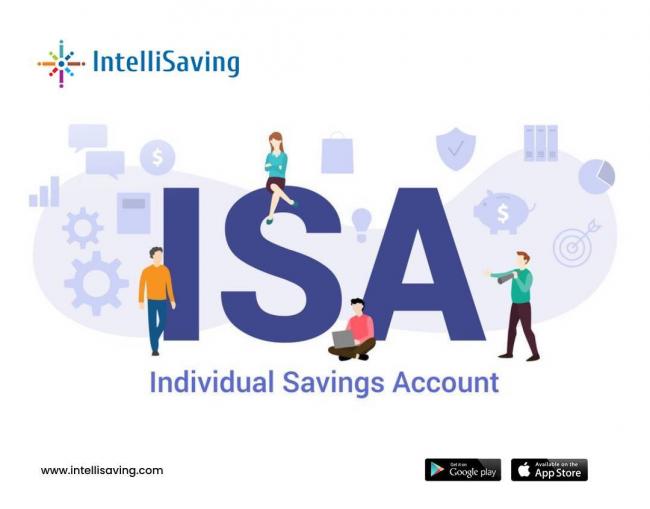
What is Cash ISA (Individual Savings Account)? Types of Cash ISA? - Explained
“Sing the song that only you can sing, write the book that only you can write, build the product that only you can build… live the life that only you can live”- Naval Ravikant.
Saving is crucial and can be a stepping stone into living the life you would like to live, especially in our day and age where life is increasingly unpredictable. However, with so many options in the market, it can be challenging to choose a saving option that matches your saving need. The article will focus on Cash ISA as this account is often difficult to track, but with the innovative IntelliSaving app, no saving account is difficult to track as the app can track multiple saving and interest-bearing accounts within one platform.
History - How ISA came into effect:
Personal Equity Plan (PEP) was an investment plan launched in the UK before being replaced by Individual Savings Account (ISA) in 1999, and supported people over 18 to invest in British companies. This investment plan allowed people to invest in “shares, authorised unit trusts or investing trusts, and they could earn both income and capital gains” without paying tax (Kagan,2021). Nevertheless, PEP was replaced with ISA because it is tax-efficient and was viewed as having more to offer, such as depositing capital into a tax-free cash savings account. By 2008 all PEPs was changed to ISAs.
What is Cash ISA?
ISA or Individual Savings Account is an advantageous saving option because you receive interest for cash Isa without being charged tax fees, and FSCS protects amounts of money that are up to £85,000. Tax-free is continually in place regardless of if you make £1,000 in interest or not. Only one cash ISA can be opened, although you can transfer to another Cash ISA with a different provider for the duration of the tax year. Your current Cash ISA can be transferred including other ISAs from earlier years and divided among providers. But the complete amount you have deposited in the current year needs to be transferred to a new provider.
If for any reason you require a change of provider, such as you find a better interest rate with another provider, your new provider must make the transfer for you so that you will be able to maintain your tax-free savings; otherwise, if you make the transfer yourself, you will lose tax-free savings. However, there are exceptions for those with Flexible ISA. Please also be aware that new providers might not allow ISA transfers and that your current provider could charge a transfer fee.
Cash ISA will not allow you to update your yearly limit, but you can update your annual limit if you have a Flexible ISA. For instance, if you save the cash ISA limit and you need to withdraw £1,000, you will not be able to replace the £1,000 straight away and will have to wait until the following tax year.
ISA accounts do not require you to pay interest for any cash in an ISA, salary or any money gained from investments in ISA. Furthermore, if you fill in a tax return, you will not be obliged to state any ISA interest, wage, or capital gains. Depositing into an ISA account can be done every tax year and you can deposit into one of each type of ISA. The tax year is from 6th April to 5th April. The maximum amount you can save into an ISA is £20,000 in either one account or divide the allowance for some or every ISA account.
Different types of Cash ISA:
- Instant Access Cash ISA (Easy Access Cash ISA):
Instant-access cash ISAs are flexible because you can withdraw money as often as you need, and generally, you will earn more interest than if the money was in a current account. The Interest rates for this type of account are typically lower than regular, notice and fixed-rate accounts. However, it is crucial to keep an eye out for unclear terms that are likely to occur with instant-access cash ISAs.
- Fixed Rate Cash ISAs:
Fixed-rate cash ISAs enable you to earn a certain rate of interest for a specific amount of time. This type of account is beneficial because the rates are higher than instant-access accounts; the more time you stay without accessing your money, the more the rate will increase. It is also essential to know that most providers will require an initial deposit, a minimum quantity you can save to be eligible for an interest rate. You will not be able to deposit any more cash once you have deposited your chosen amount of funds while the term is still in effect. Some providers might let you withdraw money; however, you might receive high penalties and a lower interest rate on any savings still in the account.
- Notice Cash ISAs
Notice Cash ISA usually does not have limitations on how often you can withdraw money; however, it will take some time before you receive it. You must give notice to your bank or building society before you can access your funds. Notice periods can be anywhere between 20-120 days but tend to be 30,60 and 90 days mostly.
- Regular Cash ISAs:
Regular cash ISAs accounts involve making frequent monthly deposits to qualify for AER; the quantity you need to pay can differ among accounts.
The decision to open a cash Isa or any other type of saving account is up to you. Though, with four types of cash Isa, you may find the right saving account for you.